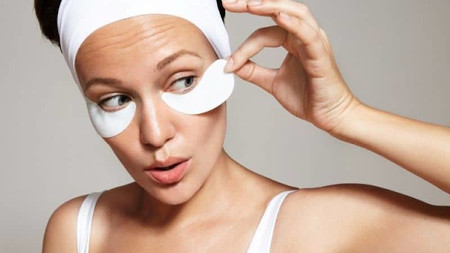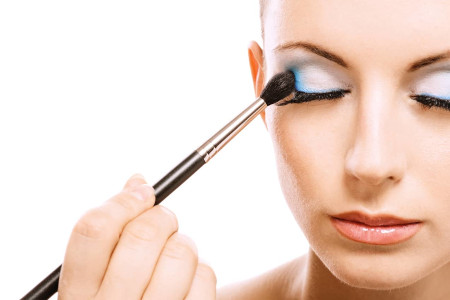Ukraine, 36011, Poltava, prospekt Pervomayskiy 9 +38 (0532) 56-02-11+38 (095) 688 25 07
Features of rehabilitation after blepharoplasty
 Eyes are a mirror of the soul, and that is why an open look, beautiful eyelashes and the absence of rays is the cherished desire of many representatives of the beautiful half of humanity. Eliminate age-related changes or natural anatomical defects under the power of ophthalmologists practicing in the field of blepharoplasty.
Eyes are a mirror of the soul, and that is why an open look, beautiful eyelashes and the absence of rays is the cherished desire of many representatives of the beautiful half of humanity. Eliminate age-related changes or natural anatomical defects under the power of ophthalmologists practicing in the field of blepharoplasty.
Blepharoplasty: types and indications
Modern plastic surgery allows you to tighten your eyelids in several ways, among which are:
- Cantopexy. This method is mainly used for fatigue (omission of the corners) of the eyes.
- Ethnic or deorientalizing blepharoplasty (singapuri). With the help of the operation, you can change the section of the eyes, and therefore most often this method is used to give Asian facial features to European ones.
- Seamless or transconjunctival plastic. This method is used to eliminate ptosis and various eye hernias.
- Plastic surgery of the lower eyelid. This method is used if necessary to remove bags under the eyes, eliminate small wrinkles and correct a tired look.
- Upper eyelid repair. This type of blepharoplasty is used not so much for an aesthetic purpose as in case of need for vision correction. This operation is often performed in conjunction with eyebrow correction and endoscopic facelift.
- Lipofilling. This method allows the redistribution of body fat, and the main purpose of this operation is to preserve the natural shape of the eyes and youthful skin.
The universal method of blepharoplasty can be called a method of circular tightening. It is he who allows you to eliminate many conditions, among which:
- closed gaze or ptosis;
- sagging skin of the lower eyelids or drooping of the outer corners of the eyes;
- dark circles or bags accompanied by fatty deposits on the upper or lower eyelids.
 Blepharoplasty is indicated for patients with congenital abnormalities or injured in the eye area.
Blepharoplasty is indicated for patients with congenital abnormalities or injured in the eye area.
How does the eyelid lift
During the operation to correct the shape of the eyelids, change the incision or shape of the eyes, the following actions are performed:
- collection of tests and analysis of the patient's condition;
- marking the places of cuts;
- anesthesia;
- surgical intervention.
At the end of the procedure for lifting or correction of the eyelids, the ophthalmologist performs the processing of the incisions and imposes special dressings.
Rehabilitation: timing, course and nuances
Recovery after blepharoplasty is a difficult process that requires attention not only from the medical staff, but from the patient himself. Rehabilitation time will depend on the body's ability to self-regulate.
It should be noted that the first signs of surgery, such as swelling and hematomas, disappear within 7-10 days. Places of cuts (especially lateral) and traces of the seam can be noticeable for 3-4 months. If blepharoplasty affected the upper and lower eyelids, then the period of early rehabilitation is 5-12 days.
In the case of a close location of blood vessels, a predisposition to edema, or an unusual structure of the skin, the recovery period can change upwards.
Features of postoperative care
Possible side effects and negative manifestations can be avoided only if the rules for the care of the face and skin around the eyes are strictly observed. That is why, after blepharoplasty, each patient must adhere to a special regime and strictly follow the instructions of a plastic surgeon.
In the first days after blepharoplasty, all patients receive pain medication and should use cold compresses to avoid excessive tissue swelling. Sleep on a high pillow (almost in a half-sitting position) will also help reduce swelling.
At all stages of healing (1.5-2 months after surgery), patients should avoid taking medications that affect blood coagulation, and also refuse to visit the bath and sauna. Hygiene procedures should be limited to a warm shower. Washing your hair should be done without incline and be sure to ensure that detergents and water do not get on your face.
 Even with all the recommendations of a plastic surgeon in the early postoperative period, the following are observed:
Even with all the recommendations of a plastic surgeon in the early postoperative period, the following are observed:
- soreness at the incision sites;
- dryness and pain;
- diplopia (doubling of the contours of objects);
- fear of sunlight;
- a feeling of heaviness (due to increasing edema).
Patients who use contact lenses should use glasses for early rehabilitation. In sunny weather, glasses with UV protection should be used throughout the entire recovery period.
Seam care
If the seam was stitched with threads for external use, then usually it is removed for 4-7 days. In order to avoid suture deformity or bleeding, patients should avoid stressful situations.
Special care for the sutures is required when performing blepharoplasty with the transconjunctival method. In this case, the use of special wound healing creams and painkillers is indicated. In the early days, this causes discomfort, but as the tissue heals, the pain becomes weaker.
To normalize blood flow and accelerate healing, regular eye exercises are recommended.
Pay attention to the eyes!
After plastic surgery, the use of drops is indicated. They are needed in order to exclude inflammatory processes and protect against the attachment of a secondary bacterial infection. For the same purpose, do not touch the eyelids with your hands and even with severe itching, touch the incisions.
People with a tendency to increase blood pressure are at particular risk. That is why they need to avoid any actions that could cause a rush of blood to the eyeballs and eyelids.
Eyelids
The care of the eyelids after blepharoplasty by surgery consists in processing the incision sites. In order to protect the eyes from the penetration of infection for the first 2-3 days, the seam is sealed with a bactericidal adhesive plaster.
Dressings are recommended to be done in the clinic, as self-removal of dressings can cause damage to the skin and lead to scarring. After removing the patch, the incision sites are treated with an antiseptic solution.
How to speed up healing
 In order for the rehabilitation to be as easy as possible, and the result of the operation performed in accordance with the patient's wishes, the use of cosmetics should be abandoned.
In order for the rehabilitation to be as easy as possible, and the result of the operation performed in accordance with the patient's wishes, the use of cosmetics should be abandoned.
Under the strict ban, alcohol and nicotine, heavy physical exertion, and even watching TV shows. It is forbidden to be at the monitor screens and read books. It is extremely undesirable to drive a car, as close attention to the traffic situation can cause excessive strain on the eyes and eyelids. A prerequisite for quick recovery is the constant use of moisturizing drops.
An important factor contributing to rapid rehabilitation is diet. In the postoperative period, patients are required to:
- observe the drinking regimen;
- refuse to accept fatty foods, fried and smoked;
- give preference to healthy food.
Sweets and coffee, as well as low alcohol drinks, are prohibited.
To speed up the process of rehabilitation and healing of incision sites, the attending physician may recommend physiotherapy or special eye exercises. Patients who have undergone surgery on the eyelids usually return to their normal lifestyle 3-4 weeks after complete healing.
specialists of the Clinic for Plastic Surgery
09-08-2019
Similar news
